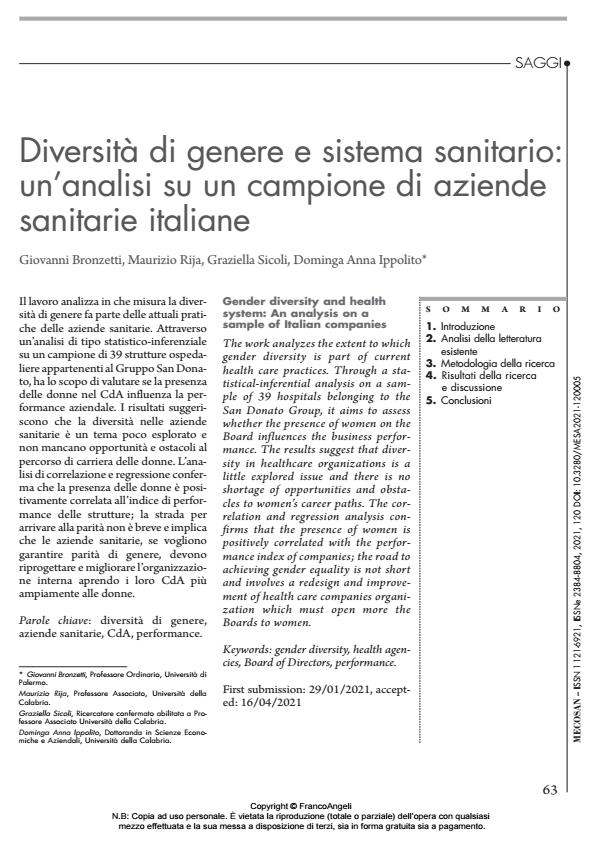Diversità di genere e sistema sanitario: un’analisi su un campione di aziende sanitarie italiane
Titolo Rivista MECOSAN
Autori/Curatori Giovanni Bronzetti, Maurizio Rija, Graziella Sicoli, Dominga Anna Ippolito
Anno di pubblicazione 2022 Fascicolo 2021/120
Lingua Italiano Numero pagine 19 P. 63-81 Dimensione file 225 KB
DOI 10.3280/MESA2021-120005
Il DOI è il codice a barre della proprietà intellettuale: per saperne di più
clicca qui
Qui sotto puoi vedere in anteprima la prima pagina di questo articolo.
Se questo articolo ti interessa, lo puoi acquistare (e scaricare in formato pdf) seguendo le facili indicazioni per acquistare il download credit. Acquista Download Credits per scaricare questo Articolo in formato PDF

FrancoAngeli è membro della Publishers International Linking Association, Inc (PILA)associazione indipendente e non profit per facilitare (attraverso i servizi tecnologici implementati da CrossRef.org) l’accesso degli studiosi ai contenuti digitali nelle pubblicazioni professionali e scientifiche
Il lavoro analizza in che misura la diversita di genere fa parte delle attuali pratiche delle aziende sanitarie. Attraverso un’analisi di tipo statistico- inferenziale su un campione di 39 strutture ospedaliere appartenenti al Gruppo San Donato, ha lo scopo di valutare se la presenza delle donne nel CdA influenza la performance aziendale. I risultati suggeriscono che la diversita nelle aziende sanitarie e un tema poco esplorato e non mancano opportunita e ostacoli al percorso di carriera delle donne. L’analisi di correlazione e regressione conferma che la presenza delle donne e positivamente correlata all’indice di performance delle strutture; la strada per arrivare alla parita non e breve e implica che le aziende sanitarie, se vogliono garantire parita di genere, devono riprogettare e migliorare l’organizzazione interna aprendo i loro CdA piu ampiamente alle donne.
Parole chiave:diversita di genere, aziende sanitarie, CdA, performance.
Giovanni Bronzetti, Maurizio Rija, Graziella Sicoli, Dominga Anna Ippolito, Diversità di genere e sistema sanitario: un’analisi su un campione di aziende sanitarie italiane in "MECOSAN" 120/2021, pp 63-81, DOI: 10.3280/MESA2021-120005